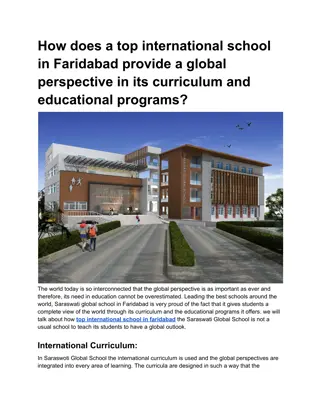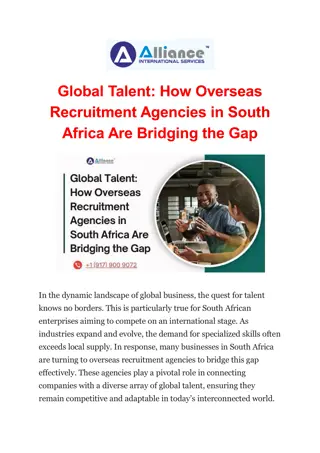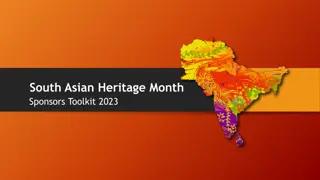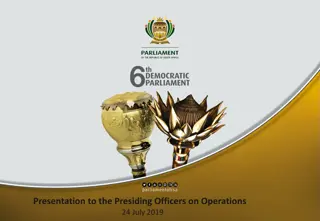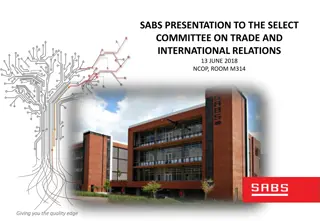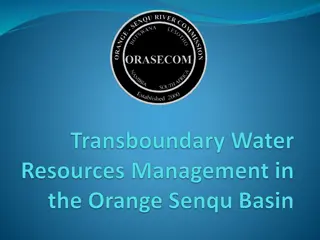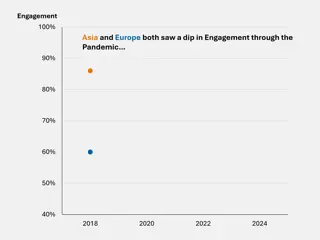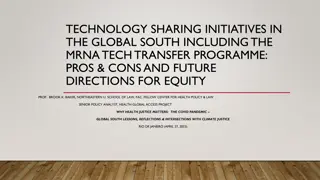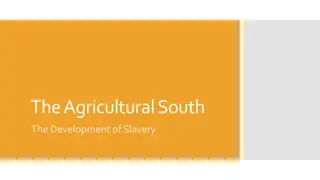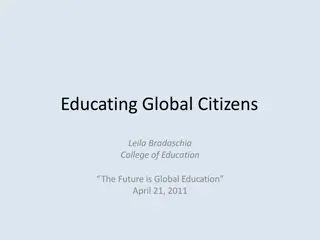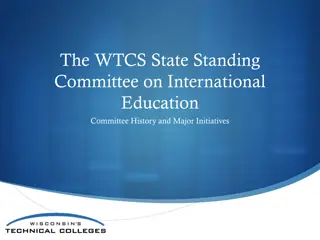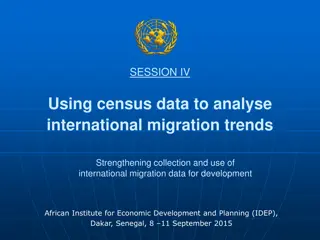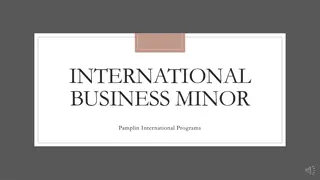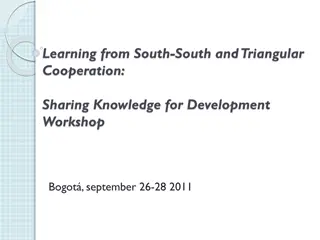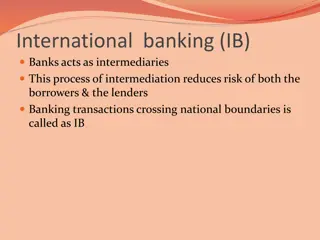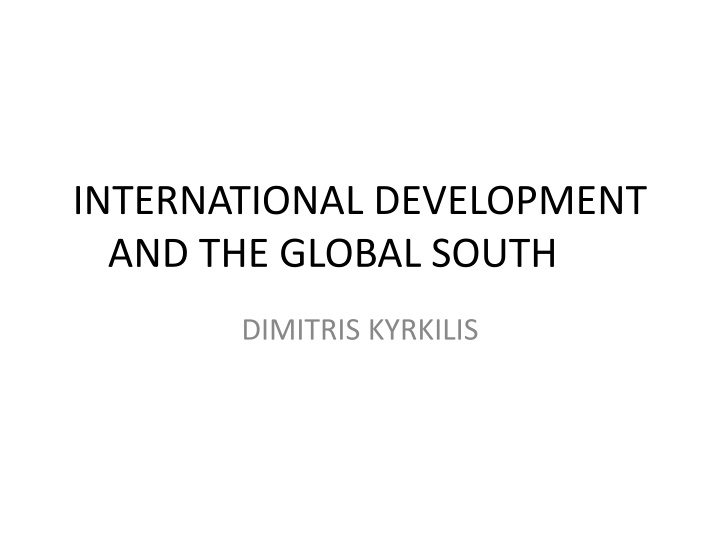
International Development and Economic Growth Overview
Explore the concepts of economic growth, economic development, and international development in the context of global South countries. Understand how economic growth contributes to improving living conditions and reducing poverty, and learn about the role of international assistance in promoting development in impoverished regions. Discover the interplay between economic growth, poverty reduction, and international collaboration for sustainable development.
Download Presentation

Please find below an Image/Link to download the presentation.
The content on the website is provided AS IS for your information and personal use only. It may not be sold, licensed, or shared on other websites without obtaining consent from the author. If you encounter any issues during the download, it is possible that the publisher has removed the file from their server.
You are allowed to download the files provided on this website for personal or commercial use, subject to the condition that they are used lawfully. All files are the property of their respective owners.
The content on the website is provided AS IS for your information and personal use only. It may not be sold, licensed, or shared on other websites without obtaining consent from the author.
E N D
Presentation Transcript
INTERNATIONAL DEVELOPMENT AND THE GLOBAL SOUTH DIMITRIS KYRKILIS
DEFINITIONS Economic Growth Economic growth can be defined as the rise of the per capita domestic income in a given period of time. It can be understood as the outward expansion of the Production Possibility Frontier (PPF)of a given national economy in a defined time period. The PPF defines the maximum bundles of goods and services a national economy is able to produce given the amount of resources and the technology available to this economy in a specified time period and the efficient use of the technology available. The outward expansion of the PPF may be achieved either by increasing the amount of resources or by improving the efficiency of the economy or both.
Economic Development Development is a concept that includes economic growth but it also refers to the conditions of life and the extent of poverty. A country develops as conditions of life improve and poverty is being reduced. The common denominator of both is economic growth in the sense of the necessary condition for achieving better conditions of life and less poverty but not the sufficient condition. Economic growth may improve the conditions of life for a share, some times a small one of the population without reducing poverty. The latter may be attained when the distribution of income becomes more equal, and this is not guaranteed by economic growth alone. It is the result of a process subject to social and political factors, i.e. institutions that are open and inclusive and they do not allow the expropriation of the additional wealth by certain elite (the latter act as rent seekers)
International Development International understood as any action of assistance on the part of states organisations that promotes international and inter-organizational connections and collaborations, in order to benefit regions and countries under conditions of poverty, or a relatively low level of development. Development may be and international
International Development International assistance was established with the founding of the Bretton Woods organizations such as the World Bank and the International Monetary Fund, and the Marshall plan of the US government established initially to aid various countries to reconstruct their economies which were devastated by the II World War. During the 1980s, when many developing countries found themselves in difficulties with public budget deficits and balance of payments deficits, these organizations began to supply them with credit under alternative terms, which mainly included changes in the management of the country that were meant to lead to development. These included the liberalization of markets and the promotion of openness, transparency and privatization. While some of the countries managed to gain strength following this assistance, most of them, especially the African countries, did not succeed in leveraging this international aid into long term development. Included among the additional international companies were aid organizations of the UN (the Development Program, the Environment Program, the World Health Organization, etc.) as well as additional international banks, such as the African Development Bank and the Asian Development Bank.
Global South Three primary definitions may be proposed fir ghe concept of Global South. First, it has traditionally been used within intergovernmental development organizations primarily those that originated in the Non- Aligned Movement to refer to economically disadvantaged nation-states and as a post-cold war alternative to Third World.
Global South Second, in recent years and within a variety of fields, the Global South is employed in a post-national sense to address spaces and peoples negatively affected globalization. In this sense Global South captures a non aligned to specific teritories geography of capitalism s externalities and accounts for populations living in lower than the average development conditions within the borders of wealthier countries. It implies that that there are economic Souths in the geographic North and economic Norths in the geographic South. Furthermore, the term South based on the centre periphery tradition represents an internal periphery and social and political marginalised positions of groups of people, while the term global is used to detach South from a one-to-one relation to geography. by contemporary capitalist
Global South Third, the second definition of the Global South has led to the understanding of the concept as a transnational political subject that results from a shared experience or condition of subjugation under contemporary global capitalism. This subject is forged when the world s "Souths" recognize one another and view their conditions as shared (L pez 2007; Prashad 2012). The use of the Global South to refer to a political subjectivity undertakes a radical internationalist stsnce arising from lateral solidarities among the world s multiple Souths, which engulf all populations that have become worse off under contemporary capitalist globalisation, and moves beyond the analysis of the operation of power through colonial
Global South Critical scholarship that falls under the rubric of Global South Studies is invested in the analysis of the formation of a Global South subjectivity, the study of power and racialization within global capitalism in ways that transcend the nation-state as the unit of comparative analysis, and in tracing both contemporary South-South relations or relations among subaltern groups across national, linguistic, racial, and ethnic lines as well as the histories of those relations in prior forms of South-South exchange.
Global South The concept of Global South has been criticized as vague and inaccurate in three main dimensions First, descriptively even when it refers to general notions such as economic development. Second, it homogenizes across different countries obscuring important differences between countries that are supposed to be part of Global South and/or North groups. In this respect the term is not better than the term Third World the term Global South is proposed to replace. Third, the term implies a geographic determinism in the sense that countries located in the Southern hemisphere are meant to be poor on geographic reasons only
Production Stages Economies specialise to the production of: raw materials in mines, quarries, etc. Agriculture products, e.g. raw foostuff, products if fishery, timber, etc. There is some manufacturing output mainly of artisanal production mode focused in traditional products, e.g. Textiles, simple metal products, etc. Countries of low per capita GDP. Primary Production Economies specialise in industrial production mainly manufacturing. Countries of middle per capita GDP. Secondary Production Economies specialise in services maintaining though a strong industrial basis. Countries of high per capita GDP Tertiary Production




